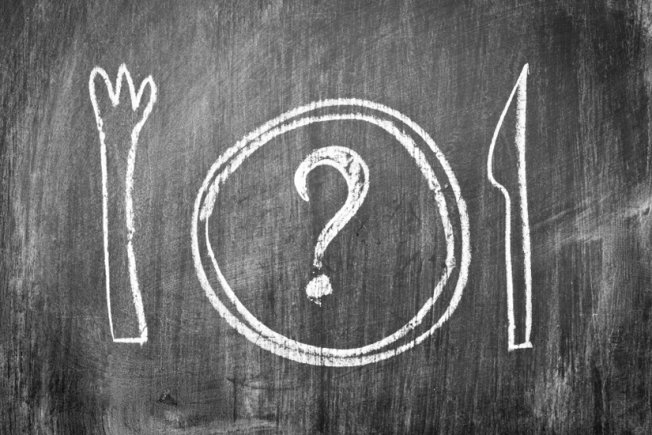
It all depends on your makeup and preferences.
First there were three square meals a day. Then there were six small ones. And now, with intermittent fasting, the latest meal-timing trend, people are skipping meals altogether for 14 to 36 hours at a time.
But when it comes to scheduling your meals in the name of weight loss, which strategy wins out?
Fasting Your Way Slim
Intermittent fasting methods vary, but among the most popular is the 5:2 diet, which involves eating normally for five days a week, then taking in only 500 to 600 calories on the other two nonconsecutive days.
If you can stick with it, this strategy can help you successfully cut calories and lose weight, says Dr. Luigi Fontana, a research professor of medicine at Washington University School of Medicine in St. Louis. After all, over the course of a week, intermittent fasting can help you cut about 20 to 25 percent of your overall calorie intake, he says.
However, that’s only if you don’t end up binging on your “normal” days. For some people, that’s no problem at all. “Preliminary data show that intermittent fasting is easier than cutting calories at every meal,” Fontana says. For others, getting into a habit of fasting and then overeating is just about inevitable, and can lead to weight gained, not lost, as well as problems with insulin, the vital hormone that regulates blood sugar. After all, about 25 percent of obese people have binge-eating tendencies, which intermittent fasting might exacerbate, according to Liz Applegate, a nutrition scientist at the University of California–Davis.
What’s more, a 2015 study from Ohio State University suggests that skipping meals increases blood sugar and insulin spikes, setting the stage for insulin resistance and Type 2 diabetes.
Still, that may only be true in certain individuals, notes Applegate. “In people with elevated blood sugar levels who are either prediabetic or diabetic, intermittent fasting might help improve their insulin sensitivity. Animal studies suggest there is a slight benefit of not constantly having insulin moving in diabetic patients.”
For instance, a 2014 review of research from the University of Illinois–Chicago determined that while capping daily calories led to greater fat loss than intermittent fasting, it yielded comparable reductions in visceral fat (a type of fat that hugs the organs to increase the risk of Type 2 diabetes), fasting insulin levels and insulin resistance.
And either way, intermittent fasting could lower your metabolism by throwing your body into starvation mode and burning muscle for fuel, Applegate says. “As little as 24 hours of fasting can lower a person’s basal metabolic rate. Well, that’s not helpful in the long run,” she says. Still, researchers are unclear if that drop is any lower than what’s traditionally seen in people who cut calories every day, not just drastically a couple of times a week, notes Martha Belury, professor of human nutrition at The Ohio State University and author of the 2015 intermittent fasting study.
Can You Run on Empty?
“So many questions we have about who might be the best candidate for intermittent fasting just aren’t answered yet,” Applegate says. The research currently is limited and largely animal-based.
But simply asking yourself, “How do I do when I skip a meal?” can tell you a lot about how you’ll do with intermittent fasting. For instance, a lot of people just don’t feel well when they drastically cut calories or miss a meal, Belury says. Their energy levels and even their work performance suffers. Words like “hangry” start getting thrown around.
“Those people who tend to become hypoglycemic when they don’t eat really do better with multiple meals a day,” Applegate says, ranging from three, all the way up to six.
Snacking the Day Away
For many, eating every few hours is critical to weight loss, as it keeps blood sugar and insulin levels stable throughout the day and prevents going into any meal ravenous, Belury says.
Even if you consume the same amount of calories you would otherwise, eating six times a day may help you maintain more metabolism-revving muscle mass than you would if you ate less often, according to a 2015 study published in Nutrition Research.
Yet, while eating six meals a day might sound like a weight-loss dream, it’s actually a lot of work – and may not be right for everyone, Belury says.
People who are great with routines respond well to the six-a-day meal plan, for example, but it can be impractical for those who aren’t up for prepping and packing meals to eat throughout the day, at least a few of them at the office. After all, if the goal is weight loss, the meals shouldn’t be drive-thru or candy bars. They need to be home-cooked and balanced, she says. And each meal needs to be small; otherwise, you could end up overeating and packing on the pounds.
Pick a Diet, Any Diet
In the end, being able to stick with your diet is more important that the actual diet you choose, according to a 2014 study published in the Journal of the American Medical Association. That’s because if you follow any approach correctly, be it intermittent fasting or eating six small meals a day, you’ll cut calories. You’ll lose weight.
“Every person has a dieting personality. You have to find the diet that works best for you,” Applegate says. “Don’t be discouraged if one doesn’t work.” Your diet should work with your lifestyle, body and preferences. It should be something you can see yourself doing, and happily, over the long term.
And remember: Even though when you eat is important, far more imperative is what you eat. “Eat protein, fruits, vegetables, whole grains and healthy fats at every meal,” Belury says. “That’s what leads to weight loss, whether you want to eat one or six times a day.”
Written for Health.USnews.com